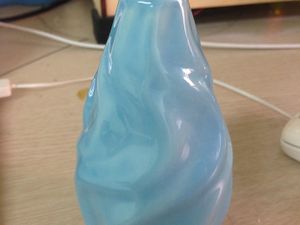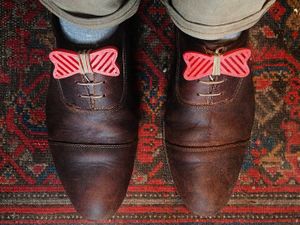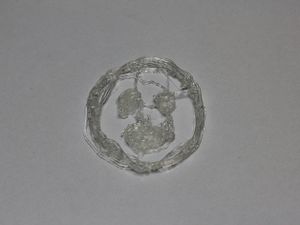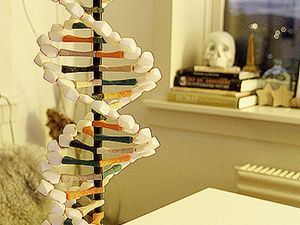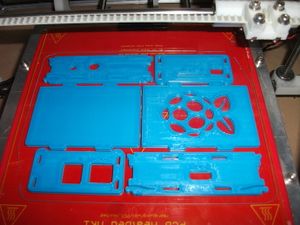User:Dslewicki
Contents
Introduction
My name is Dimitri Lewicki, a student at the Pennsylvania State University Schreyer Honors College in my second year. I am majoring in Mechanical Engineering and am pursuing minors in Engineering Entrepreneurship and German. My career goals include product development and serial entrepreneurship. I intend to graduate May 2016.
BLOGS
Weekly blogs will be written based on prompts provided by the professor. These blogs are often related to RepRap.
Blog Number One
Part A
An item that is amazing/beautiful
There is a really beautiful vase made up of external curves and crevasses that are apparently parametric sinewaves. It curves out at the bottom and tapers toward the top. Here is the link: http://www.thingiverse.com/thing:145913
Part B
An item that is funny or strange
I found a bow tie that you can tie to your shoe as a fashion piece. It looks really weird, especially on the shoes that the guy is wearing in the picture. Here is a link to the page: http://www.thingiverse.com/thing:145406
Part C
An item that is useless
Someone made a miniature model of a smart car. I see no purpose in this, and certainly does not have the "wow-factor" that a model of a supercar would have. Here is the link: http://www.thingiverse.com/thing:141481
Part D
An item that is useful
I found a DNA Helix model. Someone printed all the cross rungs and the outlying end pieces. Then they assembled them around a metal rod. This is useful for educational purposes. Her is the link: http://www.thingiverse.com/thing:145329
Part E
The best printable Raspberry Pi case I could find
The best one I could find got good reviews and many likes (60), which is more than a lot of the other cases. Also, the top and bottom of the case are interchangeable, so the design is quite versatile. Many users have printed the design. Here is the link: http://www.thingiverse.com/thing:26922/#comments
None of these designs surprise me, but I could see that some of them would need support material to be printed properly.
Blog Number Two
I am currently working on two projects for the course. The first is to finish up the Yellow/Green printer. This is going pretty well so far, though we did break one part the other day and had to replace it. But we are making headway with determining what all has to be done to finish it mechanically by looking at other finished printers. We started printing new parts for it on Tuesday and will continue doing that in the next class.
The other mission I am working on is to fix up and finish the Solidworks model of the Open Hybrid Mendel printer design. The fixing up entails converting the STL part files into editable Solidworks part files, because some of the custom parts are only in STL format right now. I am going to look into programs that could possibly convert the STL files back into Solidworks part files. But I think it may just be easier to remake them in Solidworks, because all the features would be lost in a conversion from STL to SLDPRT format. After fixing all the parts and completing a final assembly, I can potentially create a set of assembly instructions that would instruct users on how to make an OHM printer from scratch.
Another project I may want to work on after these projects is the portable 3D printer solar cart. I love the idea of being able to push a 3D printer around campus and print objects for people, all the while running off of solar power. My question about this would be if we need DC batteries, in case the sun goes behind clouds and there isn't enough sun power for a short period of time. I do not know much about solar power, so this project would be really enlightening for me.
Blog Number Three
I think Tom Stewart's blog is very well done. The first blog post is the most in depth I have seen thus far, and the pictures are good. I also like his second blog post. It is very in depth as well, and the topic he discusses about the corporate use of 3D printers is well thought out and detailed. If I were to make a suggestion, it would be that his second blog post should be broken up into multiple paragraphs, because it is long for one paragraph. That would make it easier to read.
In regards to blogs that could use improvement, I think if Steven Rekstad added pictures to his first blog, it would make it look a lot better. Pictures draw in readers and add color to a page so it's not as boring. Otherwise I think his blog is great.
Blog Number Four
My fourth blog will involve me commenting about this video: [1]
The model for Arduino is to provide an open source design of a simple, affordable computer board that beginners can use and learn on cheaply (they related it to a textbook). They also provide the software to start using it, and it works on Linux, Windows, and Mac. As of the time of the lecture (2011), Arduino was a 5 man operation. For a while they did not even do any marketing. Everything was over web communities and by word of mouth. They make their money mostly from delivering consulting and design services to people working on their platform.
With regards to RepRap, it was not apparent to me how they make money, if they do, but they do gain an amazing wealth in general terms in return for giving out their design. That wealth is the value of 7 billion designers who contribute to the RepRap community.
Another company that runs off of the open sources, "give it away," model is Wikipedia. They ask for funding and donations from its users. That is how they manage to stay in business without putting advertising on their website.
I like the whole opensource community concept that has arisen with the internet age, but if I were to start a company (which I plan on doing down the road) I would not shoot for it employing the "give everything away" model.
Blog Number Five
I see no patentable aspects to any of the Thingiverse items from my first blog post except for the Raspberry Pi case. All of the other items, including the vase, the shoe bow ties, the model car, and the DNA Helix are not unique in their function. The Raspberry Pi case, however, does have a function that may be unique compared to the other options of Raspberry Pi cases out there.
In terms of items that may be copyrightable, I think the only one that has copyrightable aspects is the sine wave vase, because it has an artistic design to it that seems to be original. The model car and the DNA Helix are not designs, nor are they original. And the shoe bow ties are not very original. The idea of them may be, but the design is not.
Looking through some of my classmates' Thingiverse items from their blogs, I found one that seems to be very patentable. It's a "quadrocopter" from Brandon Leshchinskiy's Blog. If it is the original 3D printable "quadrocopter" design or if it has some unique vital feature that sets it apart from other 3D printable "quadrocopters", then I think it has potential to be patented. And of course, as I was saying about the Raspberry Pi case on my blog, Brandon's Raspberry Pi case may have the potential to be patented as well. It seems to have some unique features which add functionality.
There are two reasons, one legal and one cultural, why one would be interested in the licensing of non-copyrightable files. The legal benefit is that the terms of the license today will be the terms forever, no matter how much copyright law changes in the future. As long as you understand that you don't have control over the non-copyrightable parts just by granting the license, there is little downside to protecting the status of the project. The cultural reason is that licensing can be a signal to others even if it isn't legally enforceable. Creative Commons licenses tell others that the creator wants to involve her work in a growing network of creativity. This sends a message to the community that they can build upon the object.
